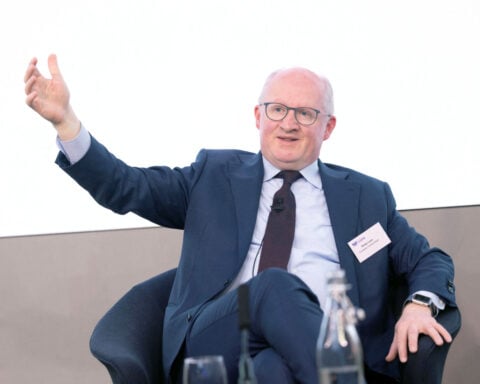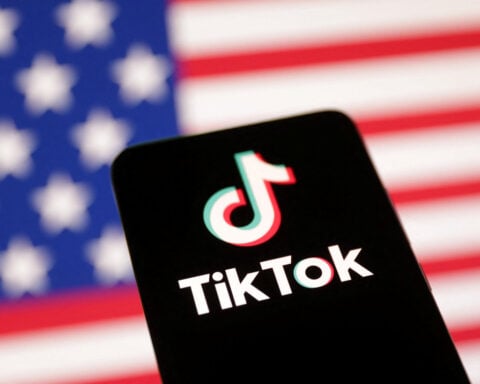The share of Latinos who give to established charities has dropped sharply since 2008, a new study has found. The same has been true for other Americans, but the percentage of Hispanics who give to help people in need through less formal efforts is higher than for others in the United States.
Those findings come from a study released last week by Hispanics in Philanthropy, an organization that works to advance Latino giving, and the Indiana University Lilly Family School of Philanthropy.
The report found that 26% of Latinos gave in 2018, the most recent data available, compared with 44% in 2008. The share of all Americans who give has also been on the decline: Only half of households gave in 2018, compared with two thirds in 2000.
One likely reason for the disparity between Latinos and other donors can be traced to the lack of economic growth for Hispanics, who are the country’s second largest ethnic group.
The average income for Latino households has stayed largely flat from 2000 to 2018, according to the report. While income was also steady for other groups, most started out with higher incomes than Hispanic households.
Still, the rate of Hispanics giving to help others in informal ways, such as crowdfunding for a neighbor’s medical bills, funding a relative’s education, and sending money to family members in another country, are higher than those of others. Sixteen percent of Latino households gave that way, on average, from 2000 to 2018, compared with 12.6% of other households, the report found. (That finding excludes giving to members of the same household.)
Una Osili, associate dean for research and international programs at the Lilly School, who worked on the report, says that when informal giving is combined with traditional charitable donations, Latino people seem to be giving disproportionately more than their non-Latino counterparts.
“We find very much that they are givers, and not only givers, but you could even say punching above their weight when you look at income and wealth and education,” she says.
Among the other findings:
Osili says Latinos are “not only givers, but you could even say punching above their weight when you look at income and wealth and education.”
1. Latino donors tended to give based on values and interests, particularly family and community, and their top four priority causes were: religious congregations; food, shelter, and basic necessities; health care and medical research; and education.
2. For high-net-worth Hispanic donors, the top priorities were education, animal rights, and health care.
3. Giving rates differed based on immigration status: Half of Latinos born in the United States donated to charity in 2018, while 40 percent of immigrants did.
4. How long immigrants lived in the United States also affected giving rates: Long-established immigrants largely gave at higher rates, especially to religious congregations, than recent immigrants. In 2018, 23 percent of established immigrants gave to religious congregations, compared with 19 percent of recent immigrants.
The report drew from several data sources, including the Lilly Family School’s Philanthropy Panel Study and a Bank of America philanthropy study, which both looked at nationally representative samples. The report also included the results of focus-group conversations on Hispanic philanthropy with donors, philanthropic advisers, and nonprofit professionals.
Researchers did not include additional information about giving specifically to family members or remittances, which typically refers to money transfers to family living in a home country.
Some nonprofit professionals think the data on generosity of Latinos might not be accurate because of cultural differences in how Hispanics think about giving.
Gigi Pedraza, executive director and founder of the Latino Community Fund in Georgia, says Latinos are more likely to consider people who aren’t blood relatives part of their family, which changes how they might respond to questions about giving to non-relatives.
“We have this expanded definition for our people, and I think that’s reflected in some of the narratives but may not necessarily be reflected in the data,” she says.
Armando Zumaya, founder of Somos El Poder, an organization supporting fundraising for Latino-focused nonprofits, says that declines in giving also reflect the fact that Latino people aren’t asked for donations.
“We are under-engaged in fundraising and philanthropy, and of course it affects our giving,” he says.
Ana Gloria Rivas-Vázquez, who directs Hispanic giving at Catholic Relief Services, says that while all fundraising is about building relations, it’s particularly important for Latino donors.
“Because the personal is so important to Latinos, because we define family, generally, more broadly than some non-Latinos, informal giving is part of our culture,” she says.
Though there are commonalities among Latino donors, nonprofit professionals stress U.S. Latinos are highly varied in culture, politics, education, and income. Fundraisers should understand how these factors, as well as others, like country of origin and language, can differ across Latino populations and shape giving.
“There was a time when people thought that engaging Latino donors meant: OK, we need to do this in Spanish,” Rivas-Vázquez says. “No, absolutely not. I think it’s a matter of figuring out: Are you talking to a prospective donor who prefers Spanish? Are you speaking to a donor who doesn’t speak Spanish at all?”
While other studies on Latino giving patterns have been conducted over the years, Ana Marie Argilagos, CEO of Hispanics in Philanthropy, says this one provides a more comprehensive and up-to-date look at trends. (Ana Marie Argilagos is on the board of the Chronicle of Philanthropy.)
Still, she says, more needs to be done.
“This is the beginning of the research, and we really do need to continue gathering more data so that we can continue to unpack the nuances of what and how our community gives,” Argilagos says.
Zumaya hopes that future reports will focus more on actionable steps for fundraisers rather than explaining philanthropic trends that have been explored in the past.
“You can count the amount of studies in philanthropy on Latinos on one hand for the last 40 years,” he says. “People don’t care about us enough to even study us. So that’s good. But it’s not the data we need. The data we need is, how do we get the $50,000-a-year family to give to the local community nonprofit?”
_____
This article was provided to The Associated Press by the Chronicle of Philanthropy. Kay Dervishi is a staff writer at the Chronicle. Email: [email protected]. The AP and the Chronicle are solely responsible for this content. They receive support from the Lilly Endowment for coverage of philanthropy and nonprofits. For all of AP’s philanthropy coverage, visit https://apnews.com/hub/philanthropy.

 Bangladesh Supreme Court acquits ex-Prime Minister Zia, clearing the way for her to run in elections
Bangladesh Supreme Court acquits ex-Prime Minister Zia, clearing the way for her to run in elections
 British author Neil Gaiman denies ever engaging in non-consensual sex as more accusers come forward
British author Neil Gaiman denies ever engaging in non-consensual sex as more accusers come forward
 A look at the events that led up to the detention of South Korean President Yoon Suk Yeol
A look at the events that led up to the detention of South Korean President Yoon Suk Yeol
 Two private lunar landers head toward the moon in a roundabout journey
Two private lunar landers head toward the moon in a roundabout journey
 TikTok preparing for U.S. shut-off on Sunday, The Information reports
TikTok preparing for U.S. shut-off on Sunday, The Information reports
 Japan's Makino Milling requests changes to unsolicited bid from Nidec
Japan's Makino Milling requests changes to unsolicited bid from Nidec
 As Los Angeles burns, Hollywood's Oscar season turns into a pledge drive
As Los Angeles burns, Hollywood's Oscar season turns into a pledge drive
 As fires ravage Los Angeles, Tiger Woods isn't sure what will happen with Riviera tournament
As fires ravage Los Angeles, Tiger Woods isn't sure what will happen with Riviera tournament








